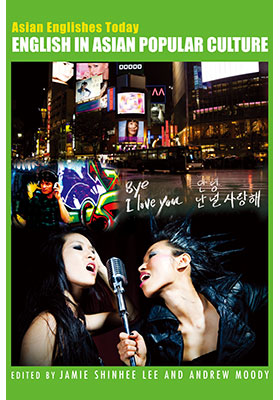English in Asian Popular Culture
(亞洲流行文化的英語)
ISBN : 978-988-8083-56-5
Asian Englishes Today
January 2012
288 pages, 6″ x 9″, 43 b&w illus.; 5 tables
Also Available on
Linguistic research has dealt with culture as one of its main concerns, but popular culture has not been the main focus. Considering how readily available pop culture is across different speech communities and how routinely it is consumed by so many people on a daily basis, it is crucial for linguists to engage in systematic observation, description and interpretation of everyday cultural and linguistic practices so many participate in. English in Asian Popular Culture discusses this important, yet under-researched, sociolinguistic component of culture by looking at a region, which is still viewed as foreign or exotic ‘other’ in Western academic discourse. The volume features six domains of pop culture: music, TV, film, advertising, magazines, and the Internet, in a variety of speech communities in Asia including China, Hong Kong, India, Japan, Korea, Singapore, Taiwan, and the Philippines. While English functions differently from domain to domain and in different cultures, each demonstrates the bilingual creativity and linguistic innovation that has developed from the spread of English into Asia. In all the cases described within this volume, English comes to facilitate the development of a modern identity across progressive generation of Asians.
Scholars and students of linguistics, communications studies, cultural studies, anthropology and Asian studies will find the volume helpful for their research. Non-academics who are fascinated by Asia and are already consuming Asian pop culture will equally benefit from the accessible discussions in the volume.
“This volume brings together scholars studying a range of Asian popular cultures, from Hong Kong, the Philippines, South Korea, Japan, China, Singapore, Taiwan, and India; more, the scholarship takes up a range of media expressions, from music to film and television, including advertising. This breadth is impressive as it is substantiated by the individual scholars’ knowledge of their separate areas and by the sheer contemporaneity of the studies.” —Shirley Geok-lin Lim, University of California, Santa Barbara


